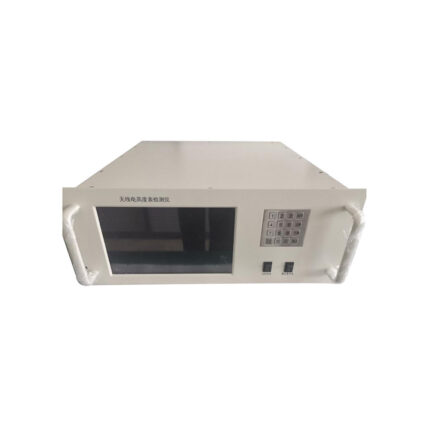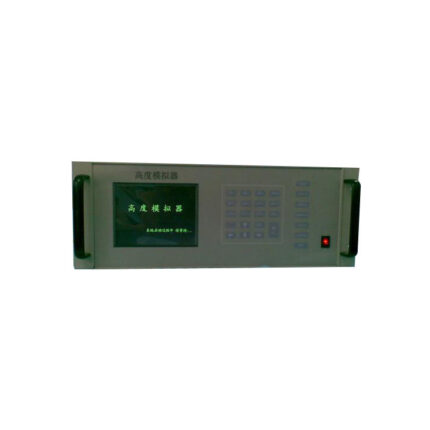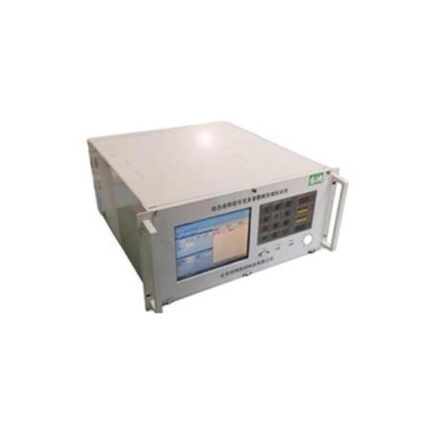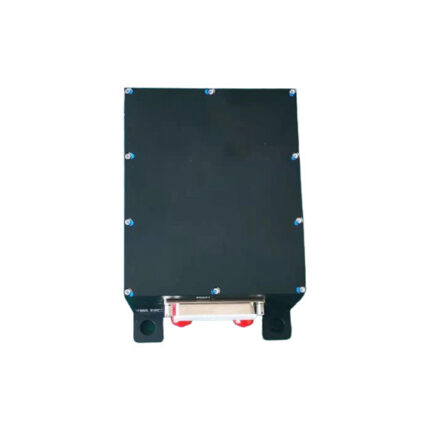Scene Simulation
Showing 19–27 of 57 results
MASS-21 Echo Simulator of Radio Altimeter
The MASS-21 Radio Altimeter Echo Simulator is capable of simulating both static and dynamic echo signals of altimeters under a variety of altitude conditions and reflection coefficient scenarios. It is compatible with radio altimeters of multiple systems, including frequency modulation (FM) systems, phase modulation (PM) systems, and pulse systems, and is also equipped with a built-in self-check function to ensure its own operational reliability during use.
MAST-09 Radio Altimeter Detection Unit
The MAST-09 Radio Altimeter Detection Unit is a compact, aerospace-grade component that monitors, validates, and processes radio altimeter data for aircraft. It filters interference, cross-references data with other flight sensors, and detects faults (e.g., signal loss, calibration drift) to deliver reliable terrain-relative altitude info—critical for safe takeoff, low-altitude flight, approach, and landing, even in low visibility. Built to meet strict aerospace standards (e.g., DO-160, DO-178), it withstands extreme environmental conditions, suiting commercial and military aircraft.
MAST-11 Equivalent Altitude Simulator of Radio Altimeter
The MAST-11 Equivalent Altitude Simulator of Radio Altimeter is a specialized aerospace testing tool engineered to replicate realistic altitude signals for radio altimeter systems. It generates precise, adjustable equivalent altitude data—mimicking terrain-relative height scenarios—to validate the performance, accuracy, and fault response of on-board radio altimeters during pre-flight testing, maintenance, or system calibration. Compliant with stringent aerospace standards, it ensures reliable simulation of low-to-high altitude ranges, supports interference-free signal output, and integrates easily with aircraft test setups, making it essential for verifying radio altimeter functionality across commercial and military aircraft platforms.
MAST-12 Radio Altimeter Exciter
The MAST-12 Radio Altimeter Exciter is a critical aerospace component designed to generate and transmit high-precision radio frequency (RF) signals for aircraft radio altimeter systems. It delivers stable, calibrated RF excitations tailored to interact with terrain or water surfaces, enabling the altimeter to calculate accurate terrain-relative altitude via signal reflection. Built to meet rigorous aerospace standards (e.g., DO-160, DO-178) for environmental resilience and performance integrity, it resists electromagnetic interference (EMI) and operates reliably under extreme temperature, vibration, and pressure conditions—supporting safe flight phases like low-altitude navigation, approach, and landing for commercial and military aircraft.
MDG-100 Radio Height Setting Device
The MDG-100 radio altimeter operates in the C-band and adopts a pulse Doppler working system. Its sensitive device is of the heterodyne type, and the circulator at the antenna terminal uses a transceiver common-mode design. With mature technology, this altimeter is installed on missiles and serves as a control component for altitude fuzes. It features capabilities such as high burst altitude, strong adaptability to high falling speeds, and excellent performance in resisting ground clutter and sea clutter. Additionally, it employs pseudo-random pulse modulation technology: the pulse period varies randomly within a specified range, making it difficult for jammers to identify the initial modulation pulse of the fuze signal and further predict the delayed pulse. This design effectively enhances the altimeter’s resistance to active interference.
MDG-200 Radio Altimeter
The MDG-200 radio height-setting device operates in the C-band and adopts a monopulse working system. Its sensitive component is of the heterodyne type, and the circulator at the antenna terminal uses a transceiver common-mode configuration. Prior to missile launch, the height-setting device needs to be powered on; it then performs a self-check and completes height setting via the communication interface. After the missile is launched, the radio frequency (RF) module is activated, and a gate is set based on the preconfigured height. When the preset height is reached, the device outputs height-setting command information and telemetry data. The MDG-200 height-setting device features mature technology: the monopulse design enhances the altimeter’s height measurement performance, and the device also has the characteristic of not being affected by the carrier’s speed.
MDG-300 Radio Altimeter
The MDG-300 radio height-fixing device operates in the C-band and adopts a pulse compression system. Its sensitive component is of the heterodyne type, and the circulator at the antenna terminal uses a transceiver common-mode design. Prior to missile launch, the height-fixing device is powered on, and it undergoes self-check and height presetting via the communication interface. After the missile is launched, the radio frequency (RF) module is activated, and a gate is set in accordance with the preset height. When the preset height is reached, the device outputs height-fixing command information and telemetry data. The MDG-300 height-fixing device features mature technology: its pulse compression technology can enhance the altimeter’s height measurement performance, and it has the characteristic of a wide height measurement range. Additionally, the digital pulse compression function based on FPGA (Field-Programmable Gate Array) endows it with advantages such as small size, low power consumption, and low cost.
MDG-400 Radio Altimeter
The MDG-400 radio altimeter operates in the C-band and adopts a frequency-modulated continuous wave (FMCW) working system, with its antenna utilizing a transmit-receive separation mode. Prior to missile launch, the altimeter (serving as the height-fixing device) is powered on, and it undergoes self-check and height presetting via the communication interface. After the missile is launched, the radio frequency (RF) module is activated, and frequency variation parameters are set based on the preset height. When the preset height is achieved, the altimeter outputs height-fixing command information and telemetry data. The MDG-400 altimeter features mature technology; its adoption of frequency-modulated continuous wave (FMCW) technology endows it with the advantages of compact size and a large height measurement range.
MDY-01 Radar Seeker
A radar seeker is a radar device installed on missiles, primarily used for target detection and tracking. It provides target position and motion parameters to the missile’s control system, thereby guiding the missile to fly toward the target. The MDY-01 radar seeker is characterized by high measurement accuracy, strong environmental adaptability, and high reliability.








